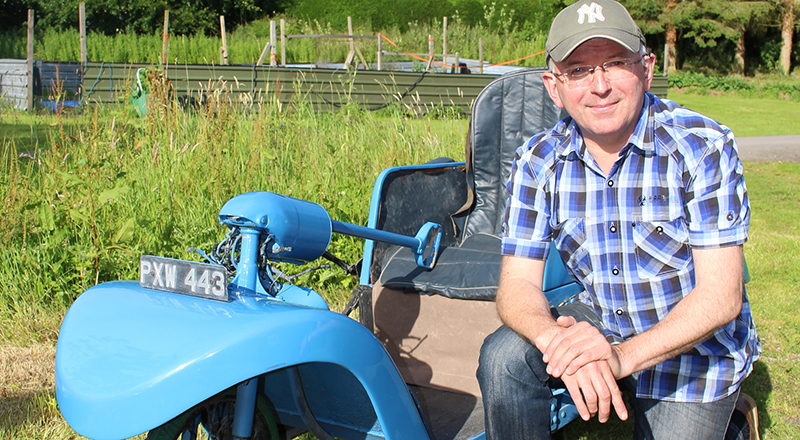Where are they now? Help is needed to uncover hidden history of iconic invalid carriages
There’s currently one sitting proudly in the Museum of Liverpool, another in nearby St George’s Hall. And a Teesside University artist and academic has one of the world’s largest collections, with 26 currently in his fleet.

But what happened to the rest of Britain’s invalid carriages and how will the memory of these iconic vehicles be preserved.
That is the question being asked by Simon Mckeown, a Reader in Teesside University’s School of Computing, Media & the Arts.
He has received a grant from the Heritage Lottery Fund (HLF) to explore and exhibit the hidden and neglected heritage of invalid carriages. Simon is urging people who once owned these vehicles, or who have memories of them, to come forward with any images, memorabilia, video footage or stories which may help inform his work.
'The question I am asking is ‘where are they now’? Not just the vehicles, but the people who used them,' explained Simon.
'There were tens of thousands of these vehicles used over many decades and when they were discontinued by the Government, some were hidden away, or forgotten about and they have become popular collectors’ items.
'I am interested in any lost vehicles, lost images, lost video footage, or lost stories, which we can preserve and present so that the memories of these vehicles are not forgotten over time.'
Issued by the Government after World War One to help disabled people to travel independently, invalid carriages were primitive in their nature and powered by hand. By the 1970s they were a distinctive bright blue and provided by the NHS for solitary travel only.
I am interested in any lost vehicles, lost images, lost video footage, or lost stories, which we can preserve and present so that the memories of these vehicles are not forgotten over time.
Simon has a long standing interest in invalid carriages and remembers his grandfather driving one of the vehicles. He now has 26 in his collection, dating from the 1930s, to the 1970s.
Through the Heritage Lottery Fund project, Simon will showcase over 100 years of British invalid carriage history, from the graceful bath chair of 1875, to the infamous killer vehicle, the AC MK70 of 1970’s, capturing the unique social, cultural and manufacturing heritage.
He is currently exhibiting at DaDaFest, a disability and deaf arts festival in Liverpool, with his vehicles and subsequent work on display in both the Museum of Liverpool and St George’s Hall. He is also working towards a larger exhibition for next year.
In addition, Simon is Director of the Invalid Carriage Register, which recently welcomed actress and star of hit BBC series Silent Witness Liz Carr as its patron. If yourself, or a member of your family used an invalid carriage, and you would like to contribute to Simon’s work, you can provide images, videos and stories via the Invalid Carriage Register website.
 International partnership signed with prestigious American
...
International partnership signed with prestigious American
... Teesside University academics join prestigious network of
...
Teesside University academics join prestigious network of
... Curatorial studies culminating with international art
...
Curatorial studies culminating with international art
...